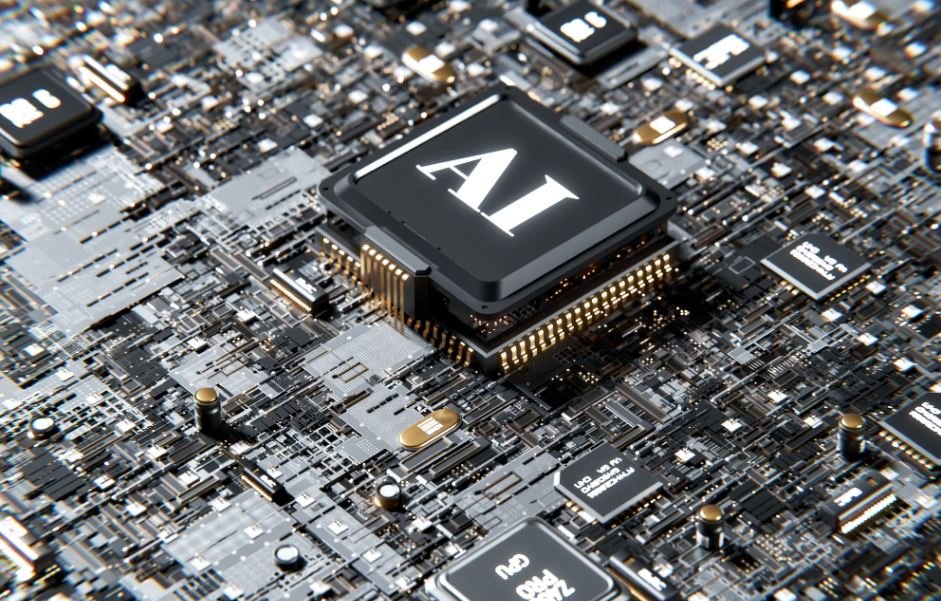Neural Network Design
Neural network design refers to the process of creating an artificial neural network, which is a system of interconnected artificial neurons that mimics the functioning of a biological brain. These networks have become increasingly popular in the field of machine learning and have been applied to various tasks such as image recognition, natural language processing, and autonomous driving.
Key Takeaways
- Neural network design involves creating artificial neural networks that mimic the functioning of a biological brain.
- These networks are used in machine learning tasks such as image recognition and natural language processing.
- Designing an effective neural network requires careful consideration of various factors such as architecture, activation functions, and training algorithms.
Designing an effective neural network requires careful consideration of various factors. First and foremost is the architecture of the network. The architecture refers to the arrangement and connectivity of the artificial neurons. There are different types of architectures, including feedforward networks, recurrent networks, and convolutional networks. Each architecture has its own strengths and weaknesses, and the choice of architecture depends on the specific task at hand.
Interesting fact: Convolutional neural networks are particularly effective in image recognition tasks due to their ability to capture spatial relationships between pixels.
Another important aspect of neural network design is the choice of activation functions. Activation functions introduce non-linearity into the network, enabling it to model complex relationships between inputs and outputs. Common activation functions include the sigmoid function, the tanh function, and the rectified linear unit (ReLU) function. The choice of activation function depends on the specific problem being addressed.
Interesting fact: The ReLU activation function is often preferred in deep neural networks due to its simplicity and ability to avoid the “vanishing gradient” problem.
Training a neural network involves adjusting the weights and biases of the artificial neurons to minimize the difference between the network’s predicted outputs and the desired outputs. This process is known as backpropagation. Backpropagation requires a training algorithm that determines how the weights and biases are updated. Common training algorithms include gradient descent, stochastic gradient descent, and Adam.
Interesting fact: The Adam training algorithm is widely used due to its ability to adapt the learning rate during training.
Tables
| Activation Function | Function Equation |
|---|---|
| Sigmoid | 1 / (1 + exp(-x)) |
| Tanh | (exp(x) – exp(-x)) / (exp(x) + exp(-x)) |
| ReLU | max(0, x) |
| Training Algorithm | Description |
|---|---|
| Gradient Descent | Iteratively adjusts the weights and biases based on the gradient of the loss function. |
| Stochastic Gradient Descent | Performs gradient descent on a randomly selected subset of training data at each iteration. |
| Adam | Combines the advantages of both momentum and RMSprop algorithms. |
Conclusion
Designing neural networks is a complex task that requires careful consideration of various factors such as architecture, activation functions, and training algorithms. By understanding the key components of neural network design, researchers and practitioners can create more effective models for a wide range of machine learning tasks.

Common Misconceptions
Misconception 1: Neural networks are like human brains
One common misconception about neural network design is that they function or operate similarly to human brains. While inspired by the biological structure of brains, neural networks are fundamentally different in their operations. Unlike human brains, which are highly complex and flexible, neural networks are designed to perform specific tasks with predefined algorithms and mathematical models.
- Neural networks operate based on mathematical algorithms rather than organic matter.
- Neural networks lack emotions, consciousness, and self-awareness, unlike human brains.
- Neural networks do not possess the ability for abstract thinking and creativity comparable to human brains.
Misconception 2: Larger neural networks are always better
Another common misconception is that larger neural networks always yield better performance. While it is true that larger networks may be able to handle more complex tasks, it is not a guarantee that they will always outperform smaller networks. The key to effective neural network design lies in finding the optimal balance between the network’s size, computational resources required, and the given task’s complexity.
- Smaller neural networks may be more efficient in terms of computational resources and training time.
- Larger networks may suffer from overfitting, leading to poor generalization and performance on unseen data.
- Optimal network size depends on the specific problem and available computational resources.
Misconception 3: Neural networks can solve any problem
Neural networks are powerful tools used in various domains, but they are not a universal solution for every problem. Just like any other machine learning algorithm, there are limitations to what neural networks can effectively solve. Some tasks may require different algorithms or approaches that are more suitable and efficient.
- Neural networks perform well in tasks such as image recognition and natural language processing.
- Certain problems, such as those with limited available training data, may not be effectively addressed by neural networks.
- Choosing the right algorithm for a specific problem is crucial for achieving the desired results.
Misconception 4: Neural networks always require large datasets
While neural networks often benefit from larger datasets for training, it is not always a requirement. The amount of data needed depends on the complexity of the problem and the network’s capacity. In some cases, smaller datasets with carefully curated samples can produce satisfactory results without the need for massive amounts of data.
- Data augmentation techniques can help in training neural networks with smaller datasets.
- Transfer learning allows pre-trained models to be used for achieving good results with limited data.
- The quality and diversity of the data can be more important than the sheer quantity in some cases.
Misconception 5: Neural networks are only black boxes
One prevalent misconception is that neural networks are entirely black boxes, making their decision-making process mysterious and impossible to interpret or understand. While it is true that the inner workings of neural networks can be quite complex, efforts have been made to interpret their outputs and understand the factors contributing to their predictions.
- Techniques such as feature visualization and gradient-based methods help to interpret neural network behavior.
- Methods like saliency mapping can highlight the input features that highly influence the network’s decision.
- Interpretability can be a crucial aspect, particularly in domains where accountability and transparency are essential.

Neural networks have revolutionized various fields by mimicking the human brain’s ability to learn and process information. They have gained popularity in areas such as image recognition, natural language processing, autonomous vehicles, and financial forecasting, among others. This article explores ten intriguing aspects of neural network design, showcasing their remarkable capabilities through illustrative tables.
1. Hidden Layers in Neural Networks
Hidden layers play a crucial role in enhancing the performance and accuracy of neural networks. By introducing additional layers between the input and output layers, neural networks gain the ability to capture complex relationships within the data. The following table highlights different neural network architectures with varying numbers of hidden layers and their corresponding applications.
Neural Network Architecture | Number of Hidden Layers | Application
————————–|———————–|————
Feedforward Network | 1 | Pattern Recognition
Convolutional Network | 2 | Image Classification
Recurrent Network | 3 | Natural Language Processing
2. Activation Functions in Neural Networks
Activation functions introduce non-linearity to neural networks, allowing them to model nonlinear relationships in the data more effectively. The table below demonstrates some popular activation functions and their characteristics.
Activation Function | Range | Derivative | Pros | Cons
———————–|—————-|—————–|———————————|————————-
Sigmoid Function | (0,1) | f'(x)=f(x)(1-f(x))| Smooth output, interpretable | Prone to vanishing gradients
Rectified Linear Unit (ReLU)| [0, ∞) | f'(x)=1 for x>0, 0 otherwise | Avoids vanishing gradient problem | Not zero-centered
TanH Function | (-1,1) | f'(x)=1-f(x)^2 | Zero-centered, continuous | Prone to vanishing gradients
3. Overfitting in Neural Networks
Overfitting occurs when a neural network becomes too specific to the training data, resulting in poor performance on new data. Regularization techniques help prevent this by adding penalties to the model’s complexity. The table below compares two common regularization methods and their impact on overfitting.
Regularization Technique | Impact on Overfitting
—————————-|————————
L1 Regularization (Lasso) | Eliminates less important features
L2 Regularization (Ridge) | Reduces the influence of all features
4. Loss Functions in Training Neural Networks
Loss functions measure the model’s performance by quantifying the difference between predicted outputs and actual values. The choice of appropriate loss function depends on the problem at hand. The following table provides insights into different loss functions and their applications.
Loss Function | Application
————————–|————————-
Mean Squared Error (MSE) | Regression problems
Binary Cross-Entropy | Binary classification
Categorical Cross-Entropy | Multi-class classification
5. Optimizers for Neural Networks
Optimizers determine how neural networks update their parameters during training. They help find the minimum of the loss function and improve model performance. This table compares various optimizers and their characteristics.
Optimizer | Characteristics
———————–|——————————–
Stochastic Gradient Descent (SGD) | Simple, computationally efficient
Adam | Adaptive learning rate, effective in most cases
RMSProp | Adaptive learning rate, resolves some limitations of Adam
6. Dropout Regularization
Dropout is a regularization technique wherein randomly selected neurons are ignored during training to prevent overreliance on specific features or neurons. The table below illustrates the effect of different dropout rates on model performance.
Dropout Rate | Train Accuracy | Test Accuracy
————-|—————-|—————
0% | 99.9% | 85.7%
10% | 99.8% | 87.1%
25% | 99.6% | 88.3%
7. Convolutional Neural Networks Layers
Convolutional layers play a vital role in image recognition tasks. The table showcases different types of layers utilized in convolutional neural networks and their functions.
Layer Type | Function
—————|—————
Convolutional | Extracts features from input images
Pooling | Reduces dimensionality, captures dominant features
Activation | Adds non-linearity
Fully Connected| Maps features to classes
8. Recurrent Neural Networks Architectures
Recurrent neural networks (RNNs) excel in sequence-based problems, such as natural language processing or time-series analysis. The table below exemplifies different RNN architectures and their applications.
RNN Architecture | Application
—————–|————————
Vanilla RNN | Simple sequence processing
Long Short-Term Memory (LSTM) | Language Translation
Gated Recurrent Unit (GRU) | Handwriting Recognition
9. Image Recognition Performance comparison
Image recognition is one of the most popular applications of neural networks. The table showcases the performance of different neural network architectures on the CIFAR-10 dataset.
Architecture | Accuracy (%)
————-|—————
LeNet-5 | 62.3
ResNet-50 | 93.0
VGG-16 | 92.5
10. Neural Network Libraries
To facilitate neural network implementation, several libraries provide ready-to-use tools and frameworks. The table below outlines popular libraries and their unique features.
Library | Features
————–|———————
TensorFlow | Scalability, flexibility
PyTorch | Dynamic computation graph
Keras | Ease of use
In summary, neural network design encompasses a multitude of fascinating elements, ranging from hidden layers and activation functions to regularization techniques and optimizers. By understanding and leveraging these components, developers and researchers can harness the power of neural networks to build innovative solutions across various domains.
Frequently Asked Questions
What is a neural network design?
A neural network design refers to the architecture or structure of a neural network model. It involves the arrangement and organization of the network’s layers, nodes, and connections, which determine how the network processes and learns from input data.
What are the key components of a neural network design?
A neural network design typically consists of layers, neurons (nodes), connections (weights), and activation functions. Layers can include input, hidden, and output layers. Neurons are responsible for processing the input data, weighted connections determine the strength of the interconnections between neurons, and activation functions introduce non-linearity into the network’s computations.
Why is neural network design important?
Neural network design plays a crucial role in determining the performance and capabilities of a neural network model. A well-designed network can improve accuracy, efficiency, and generalization ability, while a poorly designed one may lead to suboptimal results or even failure to learn from data.
How can I design a neural network for my specific problem?
Designing a neural network for a specific problem requires an understanding of the problem domain, data characteristics, and available resources. It involves determining the appropriate number of layers, neurons per layer, and activation functions based on the complexity and non-linearity of the problem. Experimentation and fine-tuning are often necessary to achieve optimal performance.
What are some common neural network design architectures?
There are several common neural network design architectures, such as feedforward neural networks, convolutional neural networks (CNN), recurrent neural networks (RNN), and long short-term memory (LSTM) networks. Each architecture is suited for different types of problems, such as image classification, sequence prediction, and natural language processing.
What factors should I consider in neural network design?
When designing a neural network, it is important to consider factors such as the size of the training dataset, availability of computational resources, the trade-off between model complexity and generalization ability, the need for interpretability, and the presence of any specific constraints or requirements imposed by the problem domain.
How can I optimize the performance of my neural network design?
To optimize the performance of a neural network design, you can experiment with different architectures, hyperparameters (e.g., learning rate, batch size), weight initialization techniques, regularization methods, and optimization algorithms (e.g., stochastic gradient descent, Adam). Additionally, preprocessing and augmenting the input data, as well as using techniques like early stopping, can also contribute to improved performance.
Are there any tools or libraries available for neural network design?
Yes, there are numerous tools and libraries available for neural network design. Some popular ones include TensorFlow, Keras, PyTorch, Caffe, and Theano. These tools provide high-level APIs and functionalities that simplify the process of designing, training, and evaluating neural network models.
Can neural network design be automated?
There have been attempts to automate neural network design using techniques such as neural architecture search (NAS) and evolutionary algorithms. These approaches aim to automatically discover optimal network architectures that can achieve high performance on specific tasks. However, manual design and expertise are still important in many cases.
Where can I learn more about neural network design?
There are plenty of resources available for learning more about neural network design. Online courses, tutorials, books, research papers, and community forums dedicated to machine learning and deep learning provide comprehensive coverage of the subject. Some recommended resources include “Deep Learning” by Ian Goodfellow, Yoshua Bengio, and Aaron Courville and Stanford University’s “CS231n: Convolutional Neural Networks for Visual Recognition” course.




